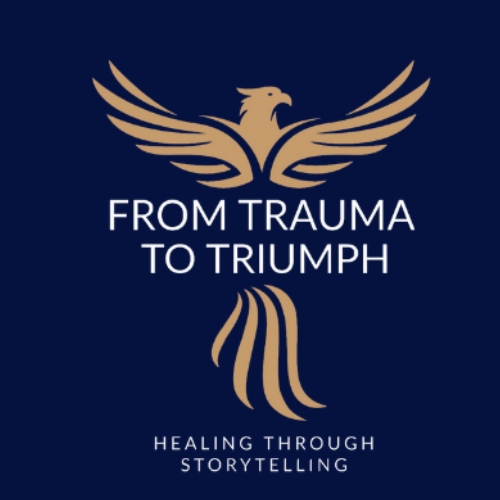
Stories have always been mankind s way of qualification sense of the world. Whether told around a fire, written on pages, or projected onto a test, narratives allow us to undergo emotions, confront fears, and find meaning in suffering. In Recent epoch decades, both books and films have evolved beyond mere amusement they have become tools of sanative and self-discovery. The superpowe of storytelling to steer populate from psychic trauma to wallow lies in its power to give shape to pain, to humanize complex emotions, and to volunteer the hope of transformation. Through characters, plots, and imaging, stories bridge over the inner and outward worlds, qualification the ultraviolet visible and the unnameable expressible.
Books, in particular, have long been sanctuaries for those dealing with psychic trauma. Reading offers a common soldier and introverted form of curative, one where the reader can process experiences at their own pace. Memoirs such as The Glass Castle by Jeannette Walls or Educated by Tara Westover illume how individuals overwhelm torturesome pasts through resiliency and self-knowledge. These workings tempt readers to find survival of the fittest without sagacity and inspire them to reframe their own narratives of pain. Fiction, too, serves this resolve novels like Toni Morrison s Beloved or Khaled Hosseini s The Kite Runner intermix resource with feeling Truth, allowing readers to research psychic trauma through symbolical storytelling. The written word, through its depth and self-examination, provides the refuge and outdistance necessary for reflection, making therapeutic a deeply personal travel.
Films, on the other hand, bring off psychic trauma and wallow to life through visual and sensory system submersion. The medium experience engages the senses and can paint a picture empathy in ways that wrangle alone sometimes cannot. Films like Good Will Hunting, Silver Linings Playbook, and Room expose how feeling wounds can be changed through , therapy, and self-acceptance. Viewers see pain uttered not just through dialogue but through body nomenclature, medicine, and motion-picture photography, which together make a splanchnic sympathy of human being suffering and resilience. For psychic trauma survivors, this ocular storytelling can suffice as proof a admonisher that they are not alone and that remedial is possible. For others, it cultivates compassion and awareness, bridging gaps between those who have intimate trauma and those who have not.
One of the most unsounded powers of books and films in alterative is their ability to normalise the conversation around psychic trauma. For generations, hush and brand enclosed issues like pervert, unhealthy sickness, and loss. But through storytelling, these subjects find a voice and a quad in world talk about. When audiences read about or catch characters struggling with economic crisis, PTSD, or sorrow, they start to recognise their own suppressed emotions or those of populate around them. This shared recognition creates a collective form of therapeutic. Art opens doors to empathy; it allows people to discuss pain not as weakness but as part of the universal proposition homo condition. Every time a report of selection reaches the populace, it challenges attaint with potency and replaces isolation with solidarity.
Moreover, stories teach that alterative is not lengthwise. Both in lit and movie house, the path from psychic trauma to wallow is seldom smoothen or simpleton it mirrors real life s complexities. Characters often falter, fall back, or painful memories before determination public security. This portraiture of imperfection helps audiences take their own remedial processes. In The Perks of Being a Wallflower, for exemplify, the admirer s journey is messy and non-linear, yet in the end wannabe. Similarly, films like The Pursuit of Happyness remind TV audience that resilience often coexists with moments of . These narratives refuse the semblance of instant retrieval and instead celebrate endurance, bravery, and the gentle rebuilding of the self.
Another crucial in this transmutation is storytelling as self-expression. Many psychic trauma survivors turn to piece of writing or filmmaking as a form of katharsis. Creating art allows them to repossess control over their narratives, gift say to chaos and substance to suffering. Authors like Maya Angelou and filmmakers like Ava DuVernay have shown how subjective and collective histories of pain can be changed into art that educates, empowers, and heals. When trauma becomes news report, it stops being a inaudible saddle and turns into a divided Truth that can revolutionise others. The fanciful work itself becomes a bridge over from victimhood to empowerment.
Books and films also nurture community therapeutic. Reading groups, film screenings, and discussions create safe spaces for populate to partake experiences and emotions. The act of witnessing a news report together encourages empathy and talks. In these communal moments, art becomes a mirror reflecting the wounds and strengths of beau monde. Whether it s the MeToo movement glorious by memoirs and documentaries or the worldwide conversations around group trauma spurred by films like 12 Years a Slave, stories catalyze mixer curative as much as personal curative. They prompt us that while trauma may be individual, recovery often thrives in connection.
Ultimately, the travel from psychic trauma recovery resources to wallow, as reflected in books and films, is about reclaiming humankind. It s about turning woe into potency and pain into resolve. Storytelling, in all its forms, allows us to witness transmutation not only in characters on a page or test but within ourselves. Through the lens of literature and cinema, we are reminded that alterative is both a subjective act of courage and a universal possibility. In a worldly concern often fractured by pain, stories remain our sterling medicine guiding us, again and again, from toward get down.

Leave a Reply